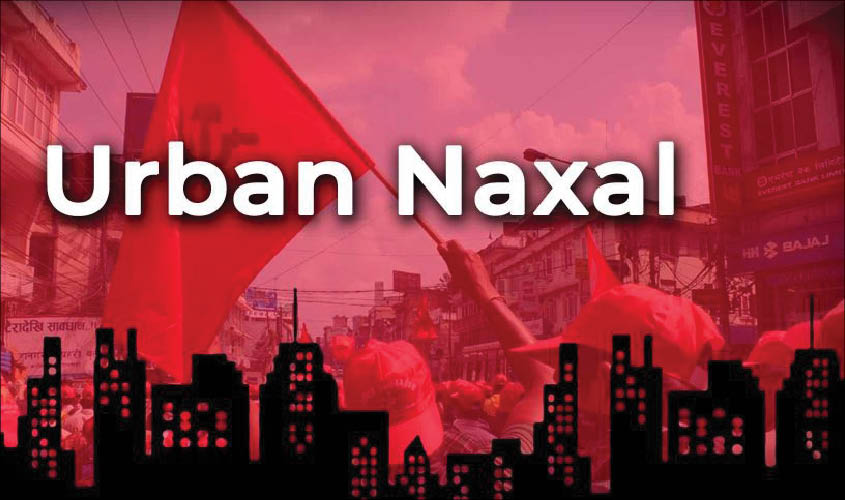If anybody goes around with Naxals who are violent rogues, that person becomes a suspect. Dissent is legitimate but not when it becomes accessory to crime.
In a short span, it has become conventional wisdom among Left-liberals that “Urban Naxals” are a figment of imagination of the ruling dispensation. Prime Minister Narendra Modi and Bharatiya Janata Party president Amit Shah, having failed to redeem their achhe din promise, are on a lookout for a bogeyman; they have found one in the Urban Naxal. QED. Nice syllogism—except that it has little to do with facts.
First off, the Modi regime didn’t create the Urban Naxal fiction: at any rate, this is no fiction; this is a fact. In an affidavit filed in the Supreme Court in November 2013—that is, by the Congress-led United Progressive Alliance government—the term “Urban Naxals” did figure. The Home Ministry, then headed by senior Congress leader Sushil Kumar Shinde, had correctly pointed out that the Naxals, also called Naxalites and Maoists, profess “a violent ideological line to overthrow the democratically elected parliamentary form of government in India through a combination of armed insurrection, mass mobilization of certain sections of the society and tactical partnerships with other insurgent groups operating in different parts of the country.”
That was not all; there were, and are, also the age-old smoke and mirrors. “The second strategy…is to mobilize certain targeted sections of the population, especially the urban population, through the ‘mass organizations’ which are otherwise known as ‘front organizations’.” These organizations, “mostly working under the garb of human rights NGOs, are organically linked to the Naxals. They, however, “maintain separate identities in an attempt to avoid legal liability.”
- Chidambaram, himself a former Home Minister, was Shinde’s Cabinet colleague at the time the affidavit was filed. There is nothing on record to show that he ever disagreed with Shinde on the Urban Naxal issue. But now he claims that there is no such thing as urban Naxalism. Reacting to the legal action by the Pune police against P. Varavara Rao, Gautam Navlakha, Sudha Bharadwaj, Arun Ferreira, and Vernon Gonsalves, the senior Congress leader says, “They are Leftwing intellectuals. They are working with tribals and the downtrodden. They are being intimidated by the government because they are perceived as strong opponents of the Rightwing.”
How convenient, Mr Chidambaram, that you have forgotten the stated position of your own government! On 6 January 2009, the then Prime Minister Manmohan Singh had listed Naxalism among “the most serious threats” to internal security. Anticipating the affidavit his government would file four years later, he had said, “It [Naxalism] is still able to garner support from among members of civil society and civil liberties organizations. It still attracts sections of the youth.”
At a national press conference in May 2010, Singh echoed the same thoughts: “I have been saying for the last three years that Naxalism remains the biggest internal security challenge facing our country.”
But Chidambaram doesn’t remember all this. When he is reminded about the fact that his government too acted against the five persons, he feigns ignorance and offers lame excuses, “I was not Home Minister then. If they were arrested for their Leftist views and activities then it was wrong then, and it is wrong now.” He could well have added: it is more wrong now than it was earlier. Thou are wronger than I, and I am holier than thou.
The facts, however, are at variance with the views expressed by Chidambaram, indeed by the entire liberal establishment. As we saw, Urban Naxals existed earlier; they exist now. Second, action against them was sound earlier; it is sound now.
But what about dissent and civil rights activism, which has been termed by the Supreme Court as “a safety valve of democracy”? But dissent and civil rights activism, like free speech and action, are valid till they don’t encroach upon the freedoms of other people. This is a truism of liberalism. Naxals, on the other hand, are doctrinally opposed to anything that can even vaguely be called freedom of expression and dissent, their pompous claims of being the messiahs of the poor notwithstanding. They are criminals who have wilfully murdered thousands of security personnel and civilians, most of them poor people.
Now anybody supporting felons is tried as an accessory to the crime. And if you fraternize with criminals, especially violent ones, you run the risk of being accused as an accomplice. So what is this ruckus about the muzzling of dissent?
If a person supports or sympathizes with the Communist Party of India, which is a legal entity not involved in any criminal activities, legal action against them for sympathies or association would be repression. Similarly, if somebody supports the BJP sympathizers. But if they go around with Naxals, who are violent rogues, or with convicted saffron cowboys, they become suspects. Then they should not be complaining if the law-enforcement agencies act against them. By the way, if the police under a hostile regime get suspicious about Union Minister Jayant Sinha’s proximity with convicted murderers, would Left-liberals term his bonhomie with them as civil society activism?
Dissent is legitimate but not when it becomes accessory to crime.
Ravi Shanker Kapoor is the author of There Is No Such Thing As Hate Speech: A Case For Absolute Freedom Of Expression, Bloomsbury India (2017).

